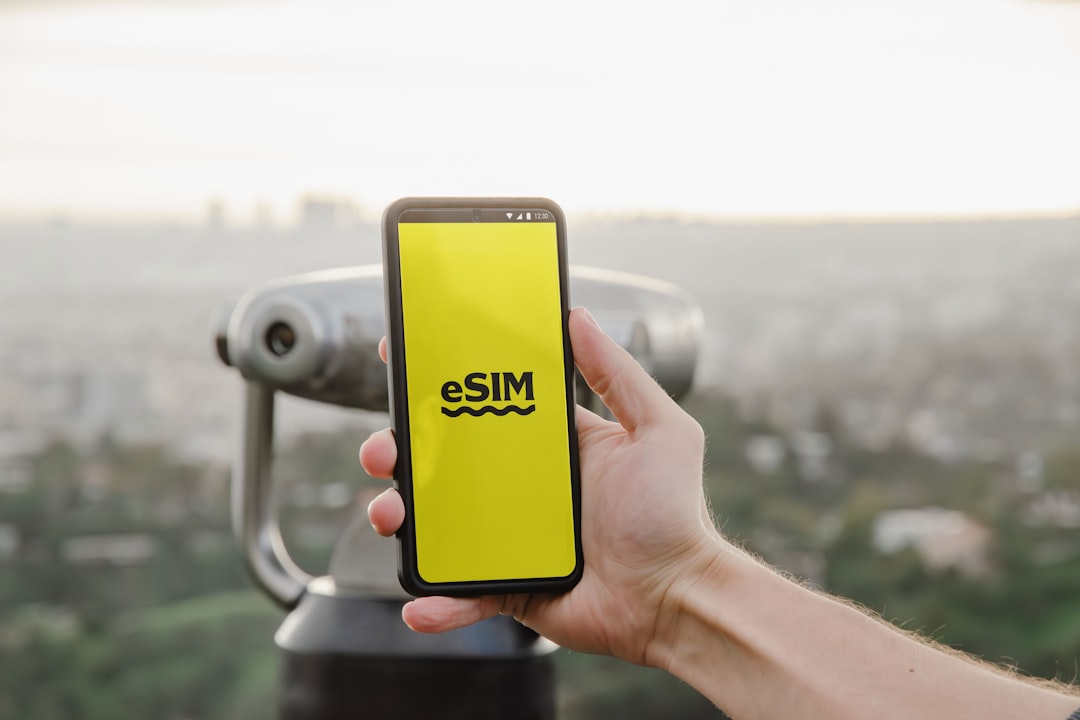Beginners Roadmap To Freedom On The Move

Introduction
The idea of a life without a permanent address is both exhilarating and intimidating. Freedom on the move promises the ability to wake up in a new city, work from a café overlooking the sea, and collect experiences instead of possessions. Yet the path to that lifestyle is rarely a straight line. It is a series of deliberate choices, small experiments, and practical preparations that together create a sustainable nomadic existence.
This roadmap is built for people who are curious, motivated, and ready to turn the dream of constant travel into a daily reality. It walks you through the mental shift, the financial foundation, the gear checklist, the remote‑work setup, the legal considerations, and the habits that keep you productive and healthy while you roam. By following each section you will gain a clear picture of what to do next, why it matters, and how to avoid the most common pitfalls.
Adopt the Nomadic Mindset
Embrace Minimalism
The first internal hurdle is learning to let go of excess. Minimalism is not about depriving yourself; it is about removing the weight that keeps you anchored to one place. Start by auditing your belongings. Ask yourself:
- Do I need this item to function day to day?
- Does it bring me joy or serve a purpose?
- Can I replace it with a digital alternative?
Keep only the essentials that support your work, health, and wellbeing. A smaller load translates to lower travel costs, easier mobility, and more mental clarity.
Define Your “Why”
A clear purpose fuels perseverance when the novelty fades. Write a short statement that captures the core reason you want to live on the move. It could be:
- Experiencing diverse cultures while building a location‑independent career.
- Gaining perspective that fuels creative projects.
- Learning new languages and skills in real‑world settings.
Revisit this statement regularly. It will guide decisions about destinations, budget allocations, and the type of work you pursue.
Cultivate Flexibility
Nomadic life is built on change. Your plans will shift because of flight delays, visa restrictions, or unexpected opportunities. Practice flexibility by:
- Keeping a loose itinerary rather than a rigid schedule.
- Having backup options for accommodation and transport.
- Accepting that not every day will be perfect and that adaptation is part of the adventure.
Secure a Reliable Income Stream
Identify Location‑Independent Skills
The cornerstone of freedom on the move is the ability to earn money without being tied to a physical office. Common remote‑friendly skills include:
- Writing, editing, and content creation
- Graphic design and illustration
- Web development and programming
- Digital marketing and SEO
- Online tutoring or coaching
- Virtual assistance and project management
If you already possess a marketable skill, focus on polishing it for remote delivery. If not, allocate time to learn a new skill through online courses, practice projects, and freelance gigs.
Build a Portfolio and Online Presence
Clients and employers need proof of competence. Create a simple website or a portfolio on platforms like Behance, Dribbble, or GitHub, depending on your field. Include:
- A concise bio that mentions your remote‑work experience.
- Samples of past work with brief case studies.
- Testimonials or references if available.
- Clear contact information and a link to your scheduling tool.
Maintain an active LinkedIn profile and consider joining niche communities on Reddit, Discord, or Slack where potential clients gather.
Choose a Primary Income Source
Most beginners start with a mix of freelance projects and gig platforms. Evaluate each option for stability, pay rate, and time investment.
- Freelance marketplaces (Upwork, Fiverr, Toptal) provide a steady flow of short‑term jobs but often take a commission.
- Remote full‑time positions offer predictable income and benefits but may limit travel flexibility if time zones are strict.
- Passive income streams (affiliate marketing, digital products, online courses) require upfront effort but can generate revenue while you explore new locations.
Select the model that aligns with your risk tolerance and lifestyle preferences. Many nomads combine a core remote job with occasional freelance side projects to diversify income.
Set Up Financial Tools
A robust financial system protects you from currency fluctuations, hidden fees, and tax complications.
- Banking: Choose an online bank with low international fees, free ATM withdrawals, and multi‑currency accounts (e.g., Revolut, Wise). Keep a backup traditional bank in case of connectivity issues.
- Payments: Use platforms like PayPal, Stripe, or TransferWise to receive payments from clients worldwide. Ensure you can withdraw funds in local currencies without excessive conversion costs.
- Budgeting: Track expenses with apps such as YNAB, Mint, or a simple spreadsheet. Allocate categories for accommodation, transport, food, insurance, and discretionary spending.
- Emergency Fund: Aim for three to six months of living expenses in an easily accessible account. This safety net reduces anxiety during travel disruptions.
Prepare Your Gear
Choose the Right Backpack or Luggage
Your primary container should be durable, comfortable, and sized for your lifestyle. For most digital nomads, a 30‑45 liter travel backpack strikes the right balance between capacity and mobility. Look for:
- Padded shoulder straps and hip belt.
- Water‑resistant fabric.
- Organized compartments for electronics, clothing, and toiletries.
- A laptop sleeve that fits your device securely.
If you travel by train or car frequently, a rolling suitcase with a sturdy frame may be more convenient.
Essential Electronics
- Laptop: Opt for a lightweight model with solid battery life, reliable performance, and a good keyboard. Consider an external SSD for backups.
- Smartphone: A device with dual‑SIM capability or eSIM support simplifies staying connected in multiple countries.
- Power adapters: A universal travel adapter with USB‑C and USB‑A ports reduces the need for multiple chargers.
- Portable charger: A 20,000 mAh power bank keeps your devices alive during long transit days.
- Noise‑cancelling headphones: Essential for focused work in noisy cafés or co‑working spaces.
- Travel router: Provides a secure Wi‑Fi network when using public internet connections.
Minimalist Clothing
Pack versatile pieces that can be layered and mixed. A typical capsule wardrobe includes:
- Two to three shirts or tops.
- One lightweight sweater or hoodie.
- Two pairs of trousers (one casual, one smart‑casual).
- A pair of shorts or a skirt for warm climates.
- Underwear and socks for a week.
- A compact rain jacket.
- One pair of comfortable shoes (sneakers) and a pair of sandals or flip‑flops.
Use packing cubes to keep items organized and compress clothing to save space.
Health and Safety Kit
- Basic first‑aid supplies (band‑aids, antiseptic wipes, pain relievers).
- Any prescription medication with a copy of the prescription.
- Travel‑size toiletries (toothbrush, toothpaste, shampoo, soap).
- Reusable water bottle and a small travel mug.
- A set of reusable masks (some regions still require them in public transport).
Navigate Legalities and Visas
Research Destination Visa Policies
Each country has its own rules for short‑term stays, digital‑nomad visas, and work permits. Create a spreadsheet with columns for:
- Country name
- Maximum stay without a visa
- Visa‑free entry requirements (passport, proof of onward travel)
- Digital‑nomad visa eligibility (income threshold, application fee)
- Important deadlines (visa expiration, renewal dates)
Resources such as the official immigration website of each country, the International Organization for Migration, and nomad‑focused blogs provide up‑to‑date information.
Apply for Digital‑Nomad Visas
Several nations now offer visas specifically for remote workers. Common requirements include:
- Proof of a minimum monthly income (often $2,000–$3,500).
- A contract or letter from an employer confirming remote work.
- Health insurance that covers the host country.
- Background check or police clearance.
The application process usually involves an online form, uploading supporting documents, and paying a fee. Start the process at least one month before you plan to relocate.
Keep Travel Documents Current
- Passport: Ensure it is valid for at least six months beyond your intended travel date.
- International Driving Permit: Useful if you plan to rent cars or ride scooters.
- Vaccination Records: Some destinations require proof of yellow fever or COVID‑19 vaccination.
Store digital copies of all documents in a secure cloud folder (e.g., Google Drive, Dropbox) and keep a printed backup in a separate location from the originals.
Understand Tax Obligations
Nomadic life can create complex tax situations. General guidelines:
- Determine your tax residency based on the number of days spent in a country and your ties (home ownership, family).
- If you remain a tax resident of your home country, you may still need to report worldwide income.
- Some countries have tax treaties that prevent double taxation.
- Consider consulting a tax professional experienced with expats and digital nomads.
Keeping organized records of income, expenses, and travel dates simplifies filing at the end of the year.
Choose Accommodation Wisely
Short‑Term Options
- Airbnb or VRBO: Ideal for stays of a few weeks to a couple of months. Look for “monthly discount” listings.
- Hostels: Offer social environments and affordable rates. Many now provide private rooms and reliable Wi‑Fi.
- Co‑living spaces: Communities such as Selina, Outsite, or Roam blend accommodation with co‑working facilities.
Long‑Term Rentals
If you plan to stay in one place for three months or more, explore local rental platforms (e.g., Idealista in Spain, Craigslist in the US). Negotiating directly with landlords can lower costs and give you more flexibility.
Factors to Evaluate
- Internet speed and reliability: Test speed using tools like Speedtest.net or ask recent guests for feedback.
- Safety: Research neighborhood crime rates and read reviews from other travelers.
- Proximity to amenities: Access to grocery stores, public transport, and coworking spots reduces daily friction.
- Work‑friendly layout: A dedicated desk or a quiet corner is essential for productivity.
Booking Strategy
- Reserve the first week in a reputable hotel or hostel to give yourself a base for exploring the area.
- Use that time to visit potential longer‑term rentals in person.
- Secure the longer stay before your short‑term booking ends to avoid last‑minute stress.
Set Up a Productive Remote Work Environment
Find Reliable Wi‑Fi
Even in cities with excellent infrastructure, connectivity can vary by location. Options include:
- Cafés with strong Wi‑Fi: Look for places that advertise “fast internet” and have power outlets.
- Co‑working spaces: Offer dedicated desks, meeting rooms, and a professional atmosphere. Many provide day passes or monthly memberships.
- Public libraries: Usually have free internet and quiet study areas.
- Mobile hotspot: Purchase a local SIM with generous data allowance and use your phone as a backup internet source.
Create a Routine
Structure combats the feeling of drifting. A simple daily schedule might consist of:
- Morning: Light exercise, breakfast, and a review of the day’s tasks.
- Mid‑morning: Focused work block (2–3 hours) with no distractions.
- Lunch: Break away from the screen, explore the neighborhood.
- Early afternoon: Second work block, handle meetings and emails.
- Late afternoon: Administrative tasks, learning, or creative side projects.
- Evening: Social activities, language practice, or relaxation.
Adjust the routine to accommodate time‑zone differences with clients or teammates.
Manage Distractions
- Use website blockers (e.g., Freedom, Cold Turkey) to limit access to social media during work blocks.
- Set a “do not disturb” sign on your desk or a visual cue for café staff.
- Keep a notepad handy for random ideas so you don’t interrupt your flow.
Backup Your Data
Data loss can be catastrophic on the road. Implement a three‑layer backup strategy:
- Local backup: External SSD or USB drive updated nightly.
- Cloud backup: Services like Google Drive, Dropbox, or Backblaze.
- Version control: For code or written work, use GitHub or GitLab.
Regularly verify that backups are completing successfully.
Maintain Health and Well‑Being
Physical Fitness
Travel often disrupts regular gym routines. Alternatives include:
- Bodyweight workouts that can be done in a hotel room or park.
- Short runs or walks to explore new neighborhoods.
- Yoga apps (Down Dog, Yoga with Adriene) for flexibility and stress relief.
- Joining local fitness classes or community sports groups to meet people.
Nutrition
Eating well while on the move is a balance of convenience and health.
- Stock a small supply of nuts, dried fruit, and protein bars for quick snacks.
- Use grocery stores or markets to buy fresh produce and simple staples.
- Cook simple meals in accommodations with kitchenettes; one‑pot dishes save time and cleanup.
- Stay hydrated, especially in hot climates. Carry a refillable bottle and aim for at least two liters a day.
Mental Health
Loneliness and burnout can creep in without the familiar support network of home.
- Schedule regular video calls with family and friends.
- Join online nomad communities (Facebook groups, Discord servers) for advice and camaraderie.
- Practice mindfulness or meditation for a few minutes each day using apps like Insight Timer.
- Keep a travel journal to process emotions and track personal growth.
Healthcare Access
- Travel insurance: Choose a plan that covers medical emergencies, evacuation, and routine care. Verify that it includes coverage for the countries you will visit.
- Local clinics: Research reputable clinics or hospitals in each destination. Use websites like WhatClinic or Expatica for reviews.
- Prescriptions: If you need ongoing medication, arrange a supply for at least a few months and identify a pharmacy where you can refill if needed.
Build a Community on the Road
Connect with Other Nomads
- Attend meetups organized through platforms like Meetup.com or Couchsurfing.
- Work from co‑working spaces that host regular networking events.
- Participate in local workshops, language exchanges, or volunteer projects.
Engage with Locals
- Learn basic phrases in the local language; it opens doors and shows respect.
- Shop at markets, dine at family‑run restaurants, and attend cultural festivals.
- Use “slow travel” techniques: stay in one place for at least a month to build deeper relationships.
Online Presence
- Share your journey on a blog, YouTube channel, or Instagram (if you enjoy content creation). It can attract clients, collaborators, and friends.
- Offer value to the community by answering questions, writing guides, or hosting webinars.
- A strong online brand reinforces your professional credibility and personal network.
Manage Finances on the Move
Track Expenses in Real Time
- Use a budgeting app that supports multiple currencies. Set categories that match your lifestyle (e.g., “co‑working”, “local transport”, “experiences”).
- Review your spending weekly to spot trends and adjust your budget.
Optimize Currency Exchange
- Keep a small amount of local cash for places that don’t accept cards.
- Use a card with no foreign‑transaction fees and favorable exchange rates (e.g., Revolut, N26).
- Convert larger sums only when the rate is favorable; avoid frequent small conversions that incur fees.
Plan for Taxes
- Keep receipts and invoices organized in digital folders.
- Record the number of days spent in each country to determine tax residency.
- If you qualify for the foreign earned income exclusion (US citizens), gather the necessary forms (e.g., Form 2555).
Build a Sustainable Savings Habit
- Allocate a fixed percentage of income to a “future travel fund” for larger experiences or emergencies.
- Automate transfers to a high‑yield savings account or a low‑risk investment vehicle.
Overcome Common Challenges
Visa Expiration Anxiety
- Set calendar reminders two weeks before each visa or permit expires.
- Keep a list of nearby countries where you can transition without a long‑haul flight.
- Consider applying for a “digital nomad” visa early, as processing can take several weeks.
Internet Outages
- Always have a mobile hotspot as a backup.
- Download important files for offline work ahead of time.
- Identify nearby cafés or libraries before you need them; a quick Google search can save you hours.
Loneliness
- Schedule regular virtual hangouts with friends.
- Join local clubs or classes that align with your interests.
- Use “buddy” platforms like Nomad List’s “Travel Buddy” feature to find fellow travelers heading the same direction.
Burnout
- Take a “digital detox” day each week where you avoid screens entirely.
- Change scenery regularly; even a short train ride can refresh your mind.
- Revisit your original “why” statement and adjust goals if they no longer feel relevant.
Continuous Learning and Skill Development
Keep Skills Fresh
- Allocate a few hours each week for online courses (Coursera, Udemy, Skillshare) that enhance your marketability.
- Join hackathons, writing challenges, or design contests that push you out of your comfort zone.
- Seek feedback from clients and peers to identify growth areas.
Learn Local Languages
- Use language apps (Duolingo, Memrise) for daily practice.
- Attend language exchange meetups or hire a local tutor for conversational practice.
- Learning even a handful of phrases improves daily interactions and shows cultural respect.
Explore New Hobbies
- Try activities unique to each destination: surfing in Bali, cooking classes in Morocco, or hiking in Patagonia.
- Hobbies not only enrich your travel experience but also provide content for personal branding.
Planning Your First Long‑Term Move
Choose a Base Destination
Consider the following criteria:
- Cost of living relative to your income.
- Availability of reliable internet.
- Visa flexibility for digital nomads.
- Community of expats or remote workers.
- Climate and lifestyle preferences.
Create a shortlist of three to five countries and research each in depth before committing.
Create a Detailed Timeline
Break down tasks into weekly milestones:
- Week 1‑2: Skill audit, portfolio update, income plan.
- Week 3‑4: Financial tool setup, emergency fund start.
- Week 5‑6: Gear acquisition, backup of documents.
- Week 7‑8: Visa research, application for digital‑nomad visa if needed.
- Week 9‑10: Accommodation scouting, booking first month.
- Week 11‑12: Health insurance purchase, medical check‑up.
Adjust the timeline based on personal speed and external factors such as visa processing times.
Test the Lifestyle Locally
Before fully committing, try a “mini‑nomad” experiment:
- Work remotely from a nearby city for a week.
- Stay in a co‑living space or hostel.
- Follow your new routine and assess productivity, comfort, and wellbeing.
Use insights from this trial to fine‑tune your setup.
Scaling Your Nomadic Lifestyle
Diversify Income Sources
- Add passive revenue streams like affiliate marketing or selling digital products.
- Offer consulting or coaching packages that can be delivered asynchronously.
- Build a small team or outsource tasks to free up your own time.
Invest in Personal Branding
- Publish case studies or thought‑leadership articles in your niche.
- Speak at virtual conferences or local meetups.
- Create a newsletter that showcases your expertise and travel experiences.
A strong brand attracts higher‑paying clients and opens doors to collaborations.
Transition to a Semi‑Permanent Home Base
Some nomads eventually settle in a “home base” that serves as a hub for longer stays. Benefits include:
- Lower overall travel costs due to bulk lease discounts.
- Ability to store equipment and personal items.
- A stable address for banking and legal purposes.
Choose a location with good connectivity, favorable tax laws, and a vibrant community, then treat it as a strategic node in your global network.
Final Thoughts
Freedom on the move is not a destination; it is an ongoing practice of intentional choices, disciplined habits, and continuous learning. By adopting a minimalist mindset, securing reliable income, mastering legal and financial logistics, and nurturing both health and community, you create a resilient framework that lets you explore the world without sacrificing stability.
Remember that every step you take—whether it is booking a co‑working desk in Lisbon, learning to say “thank you” in Japanese, or negotiating a digital‑nomad visa—adds to a mosaic of experiences that define your nomadic life. Embrace the uncertainties, celebrate the small victories, and keep revisiting your core “why.” The road may be winding, but with the roadmap outlined here you have a clear guide to turn the dream of perpetual travel into a sustainable reality.
Random Posts

Thailand Digital Nomad Guide Safety and Culture Tips
Discover essential safety advice and cultural etiquette for thriving as a digital nomad in Thailand, from health and transport tips to local customs, so you can work remotely with confidence and respect.
1 month ago

Top Latin American Destinations for Location Independent Professionals
Discover why Latin America is a remote work haven: vibrant culture, low cost, reliable internet, digital nomad visas and coworking hubs. Explore top cities like Medellín, Mexico City, Buenos Aires and more
1 month ago

Top Coastal Havens for Digital Nomads with Affordable Flights
Discover budget-friendly beach cities where cheap flights, low living costs and strong WiFi let digital nomads work and play by the sea without breaking the bank.
2 weeks ago

Explore Asia’s Top Digital Nomad Hotspots by Region
Discover Asia's top digital-nomad hubs, from buzzing cities to tranquil islands. Get quick insights on internet speed, coworking spaces, living costs, visa ease, community vibe and lifestyle for every remote worker.
1 month ago

Remote Work Paradise Spots and the Essential Equipment List
Discover top remote-work paradises - from beachside cafés to mountain retreats - and the must-have gear that keeps you connected, comfortable and secure wherever you set up your laptop.
1 week ago
Latest Posts

Essential Software Every Remote Professional Should Use
Master remote work with essential tools: instant messaging like Slack, high definition video calls such as Zoom, and asynchronous voice apps. Streamline communication, stay connected and boost productivity.
1 day ago

Mastering Remote Work Productivity for Digital Nomads and Freelancers
Learn proven habits, tools, and tactics that help digital nomads and freelancers stay focused, deliver quality work, and maintain a sustainable lifestyle while traveling the world.
1 day ago

Tech‑Friendly European Towns Perfect for Remote Living
Discover Europe’s best small towns where fast internet, affordable living and vibrant tech communities let you work remotely while soaking up historic charm, lakeside views or mountain air.
1 day ago